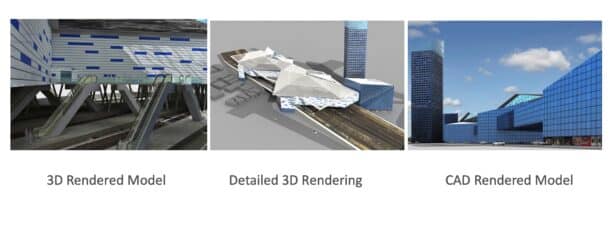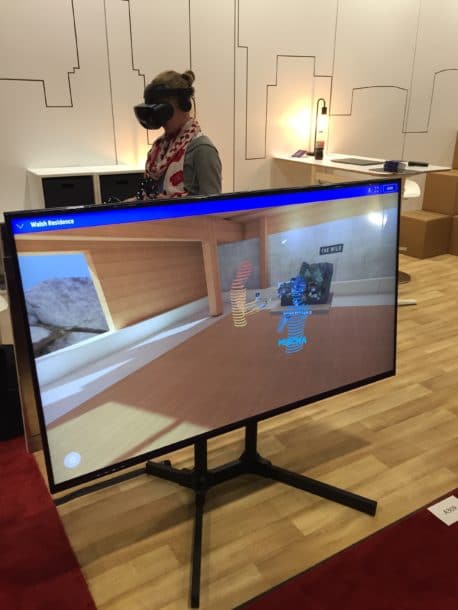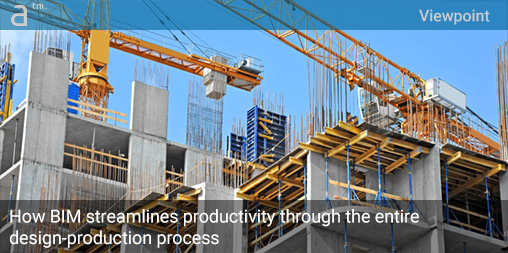BUILDING INFORMATION MODELING (BIM) is a revolutionary approach to design and documentation in the fields of Architecture, Engineering, and Construction. It helps to plan, develop, and manage projects by streamlining productivity across the entire design and documentation process.
BIM solutions in the AEC industry integrate 3D modeling and data management to fundamentally change the game, making projects more efficient, cost-effective, and sustainable. At the same time, it helps reduce errors and improve decision-making at every stage of the construction process.
Streamlining Design
Collaborative design and data sharing in modern construction and design practices have transformed the way professionals work together on complex projects. Two key components of this are real-time collaboration among design stakeholders and a centralized data repository.
Collaborative design and data sharing
In traditional design and construction processes, communication gaps and delays are common, often resulting in costly mistakes and project setbacks. However, with real-time collaboration, architects, engineers, contractors, and other stakeholders can work together seamlessly, regardless of their physical locations.
This real-time interaction enables brainstorming, problem-solving, and design iteration on the fly, ultimately leading to better design outcomes and smoother project execution.
With that, a centralized data repository, often facilitated by BIM (Building Information Modelling) systems, serves as a single source of truth for all project-related data. This repository stores 3D models, drawings, specifications, schedules, and other relevant information in an organized and interconnected manner.

This image shows a Tewksbury, MA, school in the US by Boston architecture firm Flansburgh inside a common data environment (CDE) tool, Revizto, showing a BIM model overlay feature. Revizto is an example of a CDE that supports BIM model collaboration as a single source of truth for the project. (Image: Flansburgh / All rights reserved.)
As a result, all stakeholders have access to the latest and most accurate data in real-time. This not only enhances collaboration but also reduces errors and discrepancies, leading to cost savings and improved project outcomes.
Clash Detection & Coordination
Clash detection tools and techniques allow design professionals to spot and address clashes and conflicts among various building components and systems during the early stages of a project.
By using BIM clash detection solutions, teams can visualize and resolve these issues before construction begins, preventing costly and time-consuming problems down the line. This pre-emptive approach enhances project efficiency and minimizes disruptions during construction.
Parametric Modeling
Parametric modeling enables the creation of intelligent, rule-based design models. This means that when design parameters change, such as dimensions or materials, the model automatically adjusts accordingly. This automation streamlines the design process, saving time and effort while ensuring that all design elements stay in sync with each other. It allows for quick iterations and exploration of design alternatives.
Also, using BIM, designers can establish consistent rules and relationships within their models. This ensures that design elements remain coherent and in harmony throughout the entire project. Whether it’s a small tweak or a significant modification, the parametric model maintains the integrity and consistency of the design, reducing the risk of errors and discrepancies.
3D Modeling and Visualization
A digital representation of a building provides a virtual canvas for architects and designers to explore, iterate, and fine-tune their ideas. It allows for 3D visualization, simulations, and testing of various design alternatives, enabling informed decision-making early in the design phase.

Learn how 360-degree visualization and rendering helped an architectural firm increase retrofit efficiency for a railyard project in Australia. https://www.hitechdigital.com/case-studies/bim/designed-mixed-use-building-above-existing-rail-yard-australia
In essence, creating a digital representation of the building is a transformative step in contemporary design and construction, offering architects and stakeholders a dynamic platform for exploring and optimizing design concepts before physical construction begins.
Automated Documentation Generation
This is a technological advancement that plays a critical role in modern design and construction processes. Two significant advantages are:
- Generation of Construction Drawings and Specifications: Automated documentation generation tools streamline the process of creating essential project documentation, such as construction drawings, plans, and specifications. By automating the generation of these documents from a central digital model, time and effort are saved, and the risk of human errors is eliminated.
- Accuracy and Consistency in Documentation: Since the documents are derived from the same digital model, they remain synchronized with the design, reducing the chances of conflicting information and discrepancies. This not only enhances communication among project teams but also improves the overall quality of construction documentation.
Automated documentation generation is a game-changer in the construction industry. It simplifies the creation of crucial project documents while ensuring that they are precise, consistent, and reflective of the latest design changes. This contributes to the creation of more efficient and error-free construction processes.
Enhancing Collaboration and Communication
BIM as a communication tool modernizes the way information is exchanged in the construction industry, offering two significant advantages:
Improved Communication among Project Stakeholders
BIM acts as a central hub for project information, promoting efficient and transparent communication among all stakeholders. Architects, engineers, contractors, and clients can access and share data, updates, and insights in real-time. This collaborative environment minimizes miscommunication and helps resolve issues swiftly, leading to smoother project workflows.
Visual Representation for Non-Technical Team Members
BIM provides a visual and intuitive representation of the project that is accessible to non-technical team members, such as clients, investors, and project managers. Instead of deciphering complex technical drawings, these stakeholders can easily understand and engage with 3D models and visualizations. This clarity improves client engagement, reduces misunderstandings, and enables informed decision-making, ultimately contributing to project success.
Integration with Project Management Tools
Linking and integration allow for the seamless exchange of data between Building Information Modelling (BIM) systems and project management software. This connection enables project managers to access and utilize real-time BIM data for better decision-making. Project milestones, schedules, budgets, and resource allocation can be synchronized with the BIM model, ensuring that projects are managed using accurate and up-to-date information.
Streamlining Project Workflows and Tracking Progress
Integrating BIM with project management tools results in better control over project outcomes. Project managers can align tasks and timelines with the 3D model, allowing for more precise coordination among different teams. This reduces the risk of delays and cost overruns while enhancing overall project efficiency. Real-time data updates enable project managers to monitor progress and make informed adjustments as needed.
Client Engagement
By providing visual representations and interactive experiences, clients can better understand project concepts and actively participate in discussions. This promotes a sense of ownership and collaboration, ensuring that the final design aligns with the client’s vision and objectives.

The Wild at Autodesk University 2018 back in November. The Wild is a leading AR/VR platform at Autodesk that transforms BIM models into immersive experiences for all project stakeholders to participate in. (Image: Architosh / All rights reserved.)
Client feedback is invaluable for refining and enhancing project designs. Modern technology allows for real-time incorporation of client input into the design process. Adjustments can be made swiftly, ensuring that the project remains aligned with evolving client preferences and requirements.
This iterative feedback loop results in a design that not only meets but often exceeds the client’s expectations, enhancing client satisfaction and project success.
Future Trends and Innovations in BIM
AR and VR Integrations
The integration of cutting-edge technologies like artificial intelligence and machine learning promises to revolutionize BIM. AI-powered BIM systems can automate design processes, optimize building performance, and identify potential issues before they become costly problems. Augmented and virtual reality (AR/VR) will enhance visualization and immersive design experiences, while blockchain may enhance data security and collaboration in BIM projects.
Generative Design
Generative design is a groundbreaking approach that leverages algorithms to explore a multitude of design possibilities. BIM is increasingly embracing generative design to help architects and engineers optimize their designs for factors such as efficiency, cost, and sustainability.
Sustainability and Environmental Considerations
As environmental sustainability becomes a top concern, BIM will help in integrating sustainability measures into building design and construction. BIM tools will incorporate environmental analysis, enabling architects and designers to assess the ecological impact of their designs and make data-driven decisions to reduce a building’s carbon footprint.
The Role of BIM in the Future of the AEC Industry
BIM is set to play an increasingly pivotal role in the future of the AEC industry. AEC stakeholders are increasingly collaborating with reliable BIM service providers to ensure accurate and cost-effective deliverables. As emerging technologies like AI, generative design, and IoT integration continue to evolve, BIM will harness its capabilities to further streamline design and construction processes. It will also lead the charge in addressing sustainability and environmental concerns by providing tools for eco-friendly design.
BIM’s integration into the smart city concept will enhance urban planning and development. BIM will be at the forefront of construction innovation, shaping a more efficient, sustainable, and interconnected AEC industry for the future.
About the Author
Bhushan Avsatthi is a talented architect with over 22 years in the field. He oversees the BIM division at HitechDigital Solutions, managing multiple teams of architects, structural and MEP engineers, LEED consultants, and energy modeling experts. He has spoken at various international BIM conferences and is deeply involved in green initiatives. His thoughts on global best practices in building design have been published in multiple architectural and engineering journals.



